21 Iconic Renoir Paintings To Know in 2025
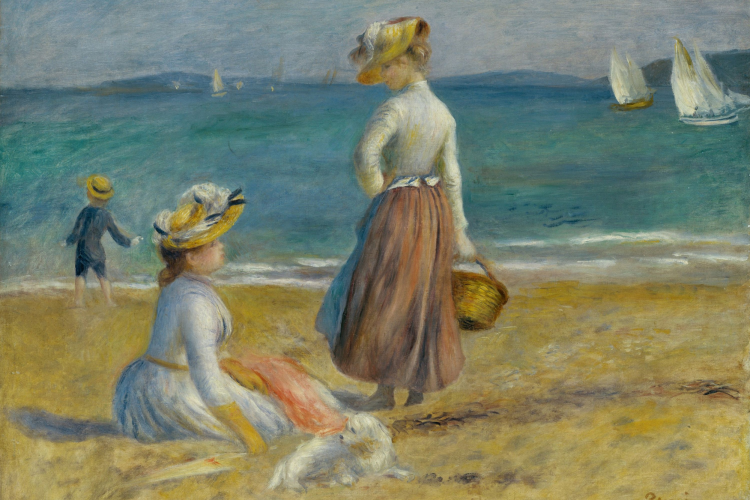
If you’ve been to an art museum, there is a good chance you’ve seen Renoir paintings. Pierre-Auguste Renoir is a French painter and known as one of the leading painters of the Impressionist movement. What is Renoir best known for? His unique use of brushstrokes and color schemes has set him apart and made him one of the most famous painters of his time and in history.
Many of Renoir’s works can be found in art galleries and museums around the world while others are in private collections. Nonetheless, he is by far one of the most famous painters today. The price for original Renoir paintings vary, with Renoir paintings being sold at auction for up to $24,435,000, according to Mutual Art. The most expensive Renoir painting for sale was "Berthe Morisot et sa fille, Julie Manet" and sold at auction in 2022 for the price mentioned in the previous sentence. If you want to learn more about Renoir paintings, this guide will tell you about some of his most iconic pieces. Here are Renoir paintings in chronological order and their significance.
Jump to Section
Who Was Renoir?
Where did Pierre-Auguste Renoir live?
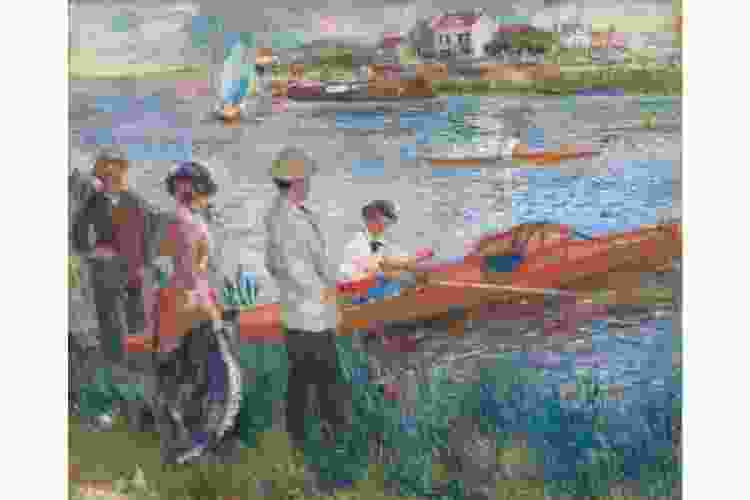
Pierre-Auguste Renoir was a French painter. He was born in Limoges in Southwestern France in 1841. Where did Pierre-Auguste Renoir live? He lived in Limoges before ultimately moving to Paris, France, where he attended the Ecole des Beaux-Arts and later, the Charles Gleyre’s studio.
In Limoges, he began as a painter on porcelain after working in a porcelain factory. In Paris, he began painting on canvas, creating many of the works he is well-known for now. The later years of his life were spent back in the South of France in close proximity to the Mediterranean coast.
The painter died in 1919 in Cagnes-sur-Mer at the age of 78. How did Renoir die? Renoir had a heart attack in his home due to contracting pneumonia and passed away shortly after.
What disability did Renoir have?
Renoir paintings are quite famous, but he also famously had a disability that affected his art. What disability did Renoir have? Pierre-Auguste Renoir had rheumatoid arthritis, which made it difficult for him to hold a brush. This disability affected his precision and efficiency.
His arthritis led to hand deformities, elbow and back stiffness and abnormal bone fusions that affected his ability to stand. However, he did not let this stop him from creating and painting. He commissioned wheelchairs and seats that would position him comfortably in front of the canvas. His assistant would place the brush in his clenched hand. And he created a swiveling palette that affixed to a wheelchair.
What Is Renoir Best Known For?
What is the difference between Monet and Renoir paintings?
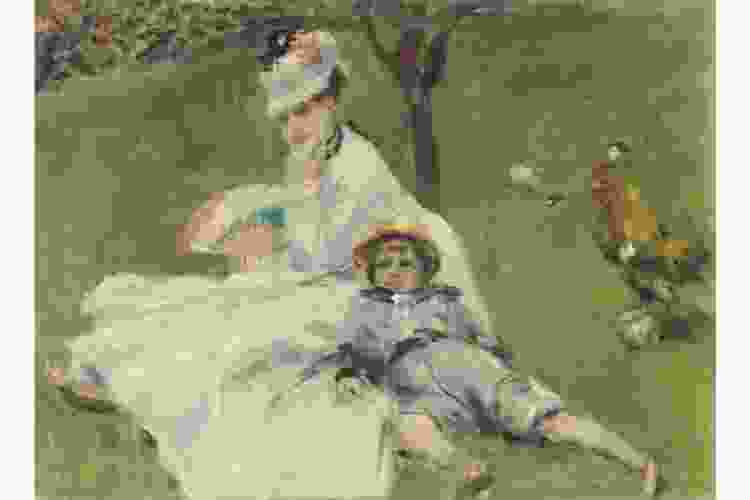
Oscar-Claude Monet — often referred to as Claude Monet — was a French Impressionist painter and one of the founders of Impressionism. Arguably, one of the most famous Impressionist painters, Monet and Renoir were contemporaries and their art often influenced each other. Monet paintings, similar to Renoir paintings, portrayed landscapes and leisure activities. His philosophy was to capture an image as he saw it, even if that didn’t mean with complete accuracy.
So, if the two artists are similar, what is the difference between Monet and Renoir paintings? Monet focused mostly on landscapes, occasionally including human figures. However, Renoir paintings tended to focus on human figures, particularly young women in outdoor landscapes. Monet also used broad and disjointed brushstrokes, while Renoir preferred more refined and clean brushstrokes. Because of this difference in technique, Pierre-Auguste Renoir Impressionism paintings tend to look more “in focus.” Comparing their works shows how you can develop a distinct art style even within one artistic movement. If you’re wondering how to find your art style, looking at the differences between artists is a good place to start.
How many paintings of Renoir are there?
Renoir was a prolific artist, creating for the majority of his life. So, how many paintings of Renoir are there? Throughout his life, Renoir painted about 4,000 works. If you’re looking for Renoir paintings for sale, you’ll often have to pay a pretty penny at auction. The price for original Renoir paintings can reach well into the millions of dollars.
The artist often created images of young women and leisurely occasions. Renoir portraits included both wealthy and lower-class women, other artists and children. Discover the incredible Renoir paintings in chronological order.
Top Renoir Paintings in Chronological Order
1. La Grenouillère (1869)
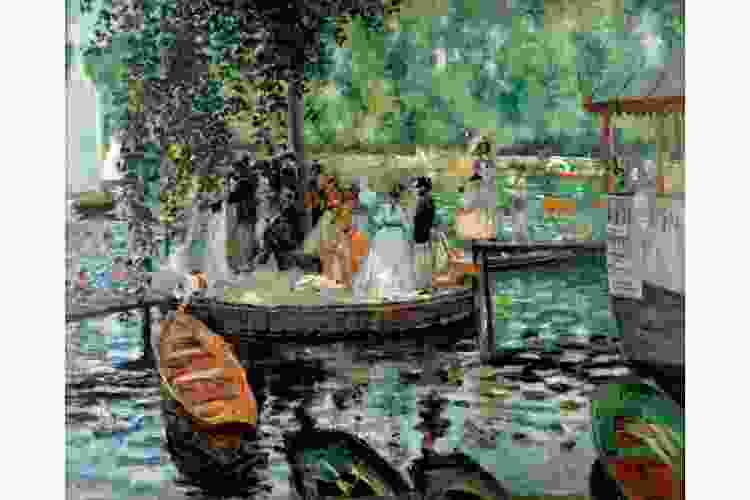
On of the early Renoir paintings in his professional career is “La Grenouillère”. It depicts a small island with a tree linked to the floating restaurant, “La Grenouillère”, as boats bob in the water and wealthy patrons disembark to the island. Claude Monet also has a painting called “La Grenouillère” depicting the same scene. The two artists painted the scene at the same time, producing similar but distinct works of art. See number 15 in our article on Monet paintings to compare the two.
2. La Loge (1874)
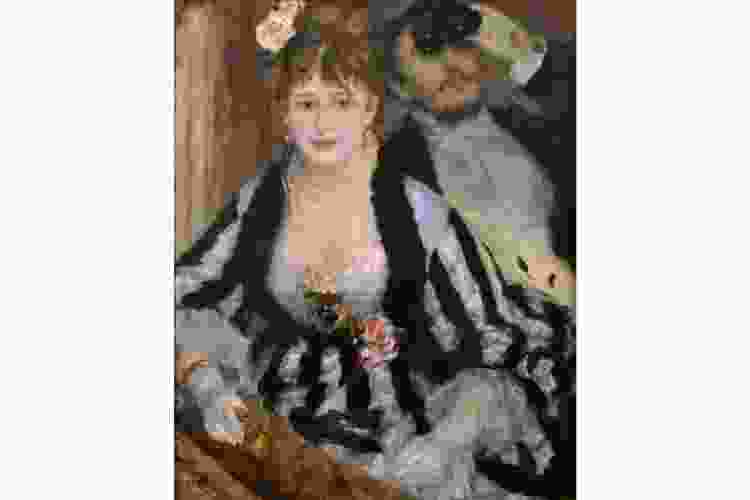
Another of Renoir’s early Impressionist paintings, “La Loge” depicts a couple in a theater box at a Paris theater. The woman in the painting is Nini Lopez, who was a model featured in fourteen Renoir paintings over the years. The man in the painting is Renoir’s brother Edmond.
3. La Parisienne (1874)
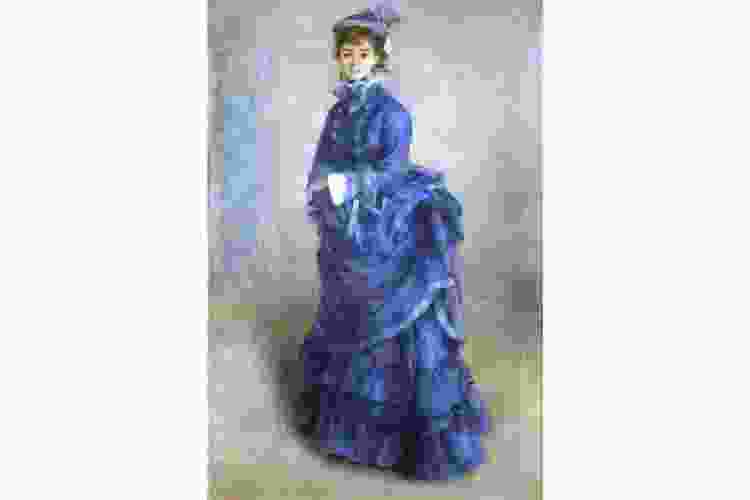
“La Parisienne” is a Renoir painting that depicts French actress Henriette Henriot before she became a famed theater actress. This Pierre-Auguste Renoir Impressionism painting features an abstract background with looser brush strokes which allows the figure to stand out. The woman’s gown is a vibrant blue and features detailed folds and ruffles that capture the extravagance.
4. Bal du Moulin de la Galette (1876)
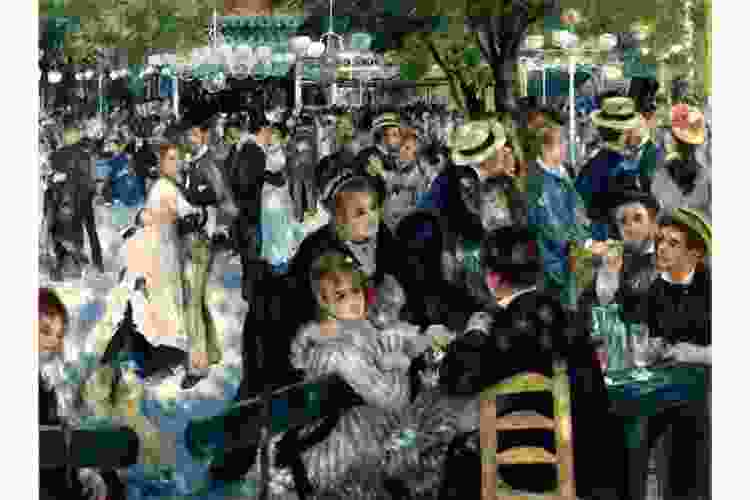
“Bal du Moulin de la Galette” is one of the most famous Renoir paintings. Often considered a masterpiece from the Impressionist movement and depicted a Sunday afternoon at the Moulin de la Galette in Paris. In the painting, you can see many intricately dressed men and women dancing, chatting and enjoying drinks. The beautiful composition and vibrant colors are what make this a masterpiece painting.
5. Jeanne Samary in a Low Necked Dress (1874)
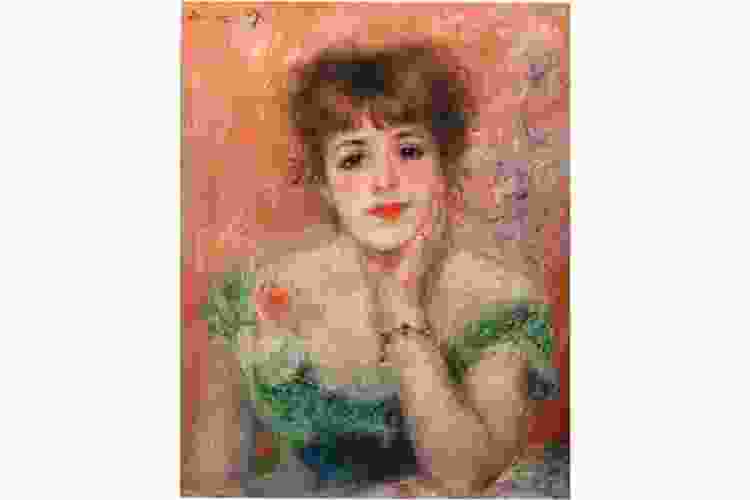
Also known as “The Daydream” (“La Reverie” in French) or “Portrait of Jeanne Samary” is one of the most famous Renoir portraits. The painting portrays young actress Jeanne Samary, wearing a blue gown with pink and yellow flowers. She lived close to Renoir’s home and he painted her multiple times. Another portrait, “Portrait of Jeanne Samary” in 1878, depicts the actress in a lavish pin gown.
6. Portrait of Claude Monet (1875)

Claude Monet, another Impressionist painter, was good friends with Renoir. Both Impressionist artists, they often influenced each other. So, it’s no wonder that “Portrait of Claude Monet” is one of the most iconic Renoir paintings. As the name suggests, it depicts Monet posing with a palette and paintbrush in front of a window.
7. The Skiff (1875)
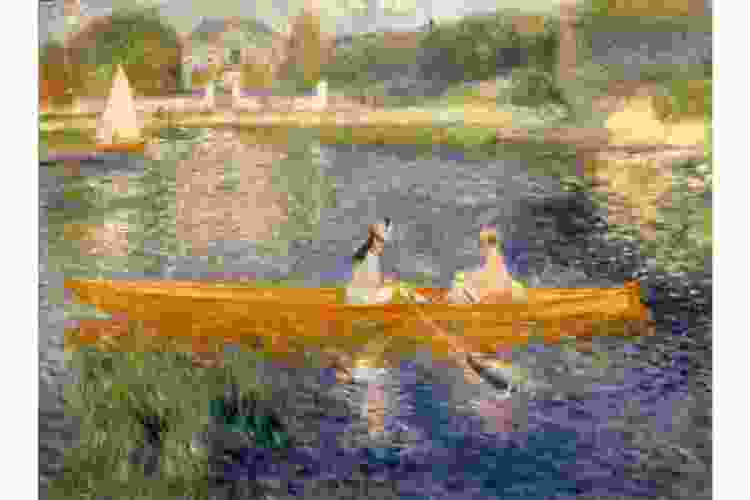
Known as “La Yole”, this is one of the softer Renoir paintings, showing an idyllic scene on the water as a young woman rows her and her female companion across the vibrant blue water. In the distance are sailboats, lush greenery and a stately manor house. The painting depicts the luxury and leisure of the middle class in Paris.
8. Luncheon of the Boating Party (1880-81)
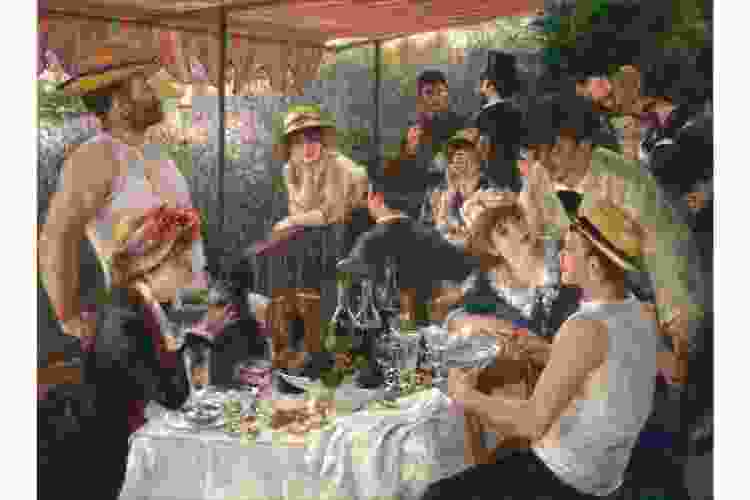
One of Renoir’s most famous paintings is “Luncheon of the Boating Party” or “Le Déjeuner des canotiers” in French. The painting depicts a group of Renoir’s friends on the balcony of the Maison Fournaise, a restaurant on the Seine River. Like some of the other Renoir paintings, it portrays the art patron, Gustave Caillebotte, as well as Aline Charigot, Renoir’s future wife.
9. Two Sisters (On the Terrace) (1881)
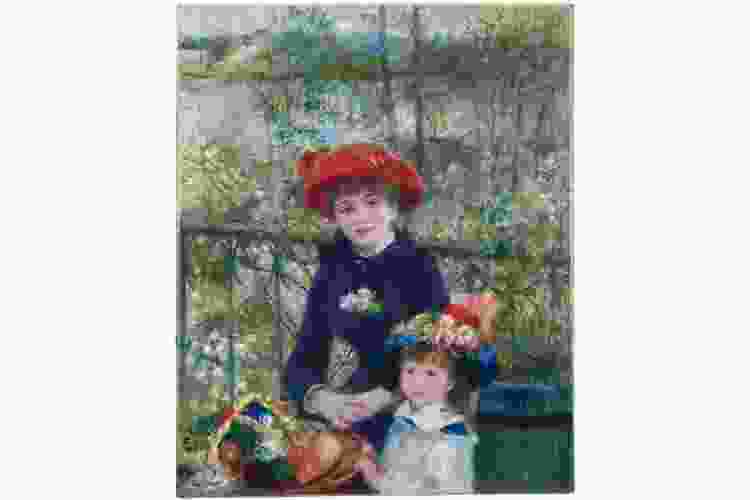
Known as “Two Sisters” or “On the Terrace”, this Renoir painting depicts two young girls sitting on the terrace of a restaurant located on an island in the Seine called Maison Fournaise. They have a small basket of balls of wool, and are wearing vibrant-colored clothing with lush shrubbery behind them. Despite the name, the two girls in the painting are not actually related.
10. Pink and Blue (1881)
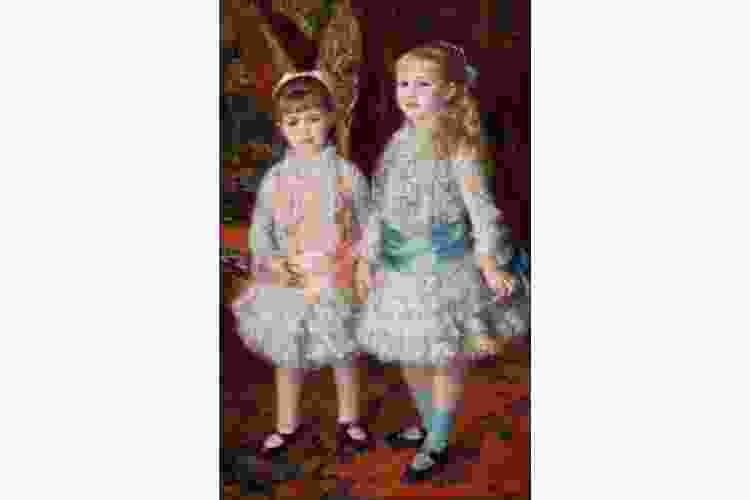
“Alice and Elisabeth Cahen d’Anvers” is the official name of this Renoir painting, but it’s colloquially known as “Pink and Blue.” It depicts the sisters of wealthy patrons Louis Raphaël and Louise Cahen d’Anvers when they were five and six years old.
11. By the Seashore (1883)

This is one of the Renoir paintings that was influenced by Renaissance art and led the artist to explore new styles of painting from Impressionism. Renoir painted “By the Seashore” after a trip to Italy, where he was influenced by Renaissance art. Instead of painting the work outside a principle of Impressionism, he is believed to have painted it in his studio.
12. Moulin Huet Bay, Guernsey (1883)
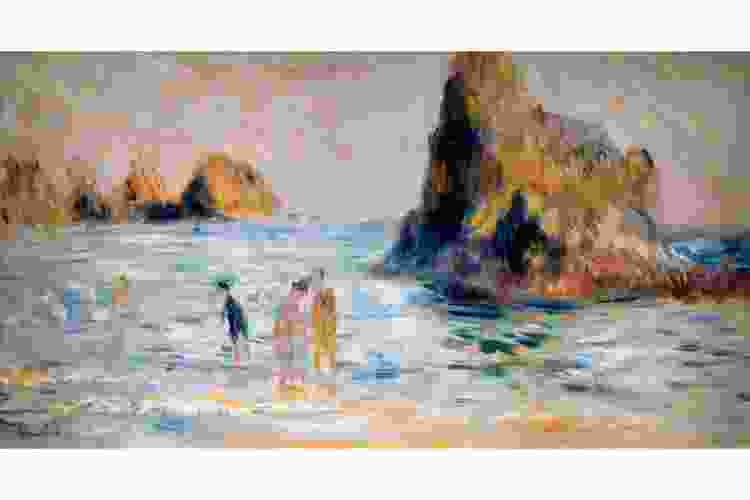
This painting beautifully depicts leisure and landscape. An image of the Moulin Huet Bay on Guernsey, the second-largest island in the Channel Islands, is the subject of this painting and features people playing in the vibrant blue surf. Renoir had visited Guernsey for six weeks and this was one of the paintings he created during his trip. In this painting, you can see him break away from some of the Impressionist techniques.
13. Danse a la Ville (1883)
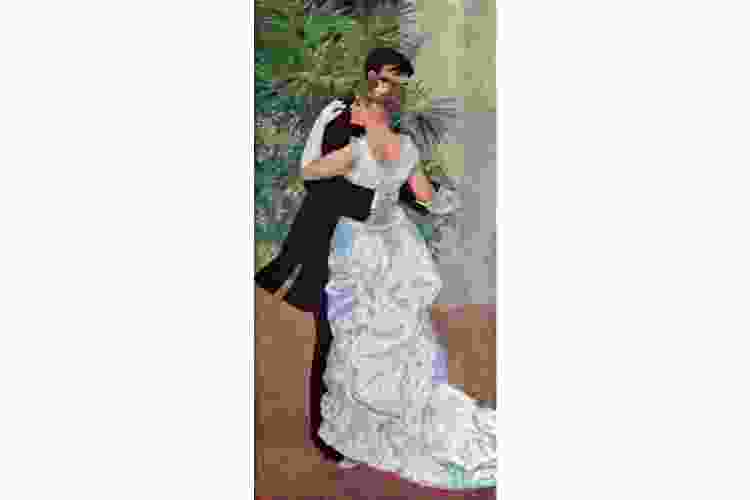
One of a series of Renoir paintings, this was commissioned by art dealer, Paul Durand-Ruel. “Danse a la Ville” or “Dance in the City” portrays a couple dancing in front of lush greenery in luxurious clothing. Aline Charigot, Renoir’ future wife, serves as the model for the woman in this painting.
14. Dance at Bougival (1883)
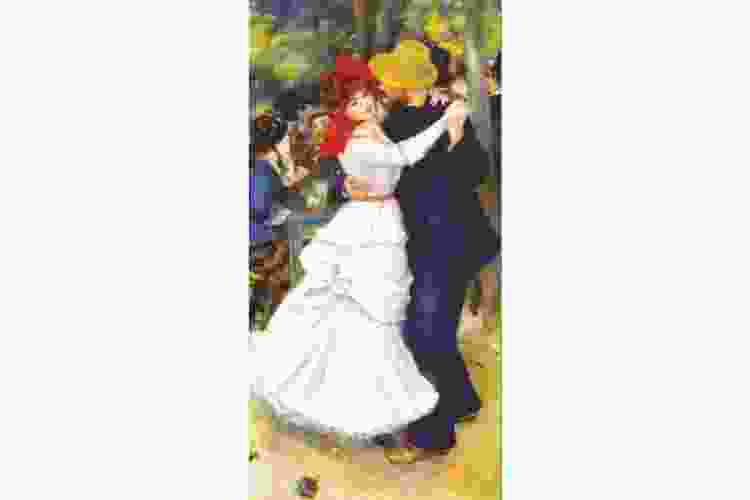
The next painting in the series is “Dance at Bougival.” This Renoir painting is set in the village of Bougival, about 15 km from Paris. In the painting, two dancers glide around the lively café. The vibrant pastels in movement in the image bring it to life, making viewers feel like they’re in the scene. This painting can be seen in one of Boston’s art galleries, the Museum of Fine Arts.
15. Dance in the Country (1883)
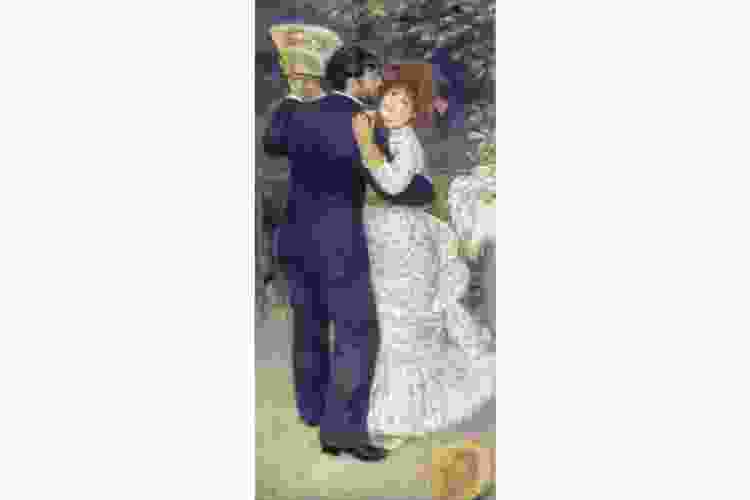
The final painting in this commissioned series is “Dance in the Country” which depicts a couple dancing underneath a chestnut tree. This is one of the Renoir paintings that was created after his trip to Italy and the inspiration from Renaissance art. The man is Paul Lhôte, Renoir’s friend, and Aline Charigot, his future wife. The warm and cheerful use of color and the woman’s gaze towards the viewer draws people in.
16. The Umbrellas (1881-86)
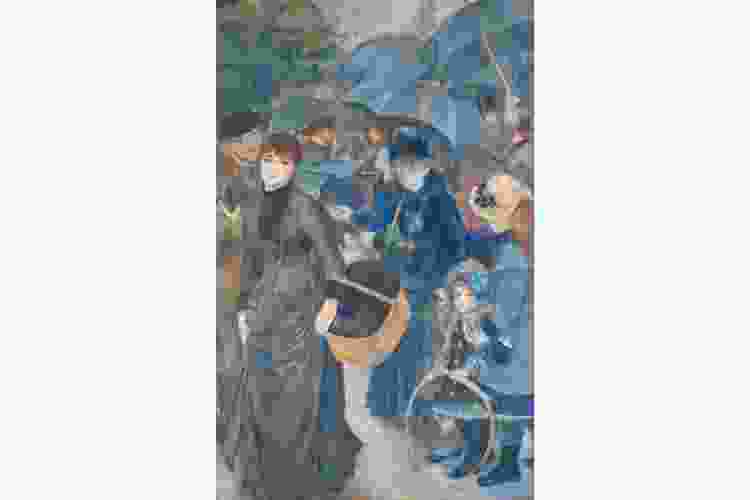
The Umbrellas by Renoir was painted in two phases. He began this painting between 1880 and 1881 with loose brushstrokes using dark and bright tones. This style was indicative of the Impressionist movement. However, as he lost attachment in later years, The Umbrellas by Renoir was reworked to have a more classical linear style and more muted colors inspired by Italian Renaissance art.
17. The Large Bathers (1887)
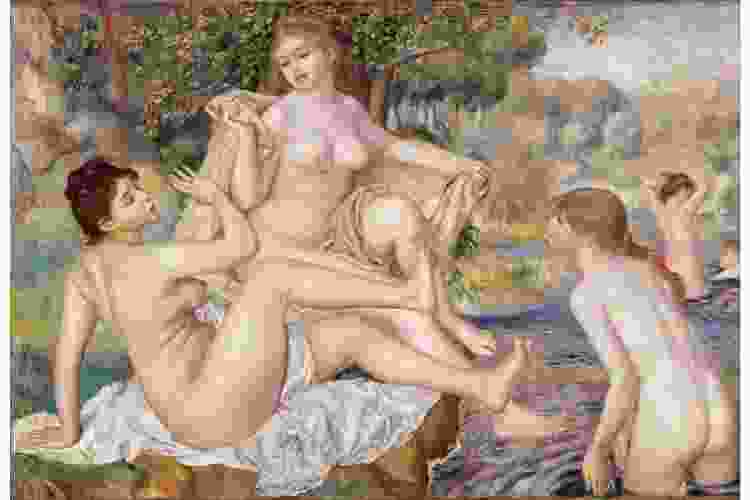
Known as “Les Grandes Baigneuses” in French, this is one of the few Renoir paintings that depicts nude women bathing, with some women standing on the banks and others wading in the water. The influence of Italian painters like Raphael paintings, or those of Veronese and Tiepolo can be seen in the style of this painting.
18. Two Young Girls at the Piano (1892)
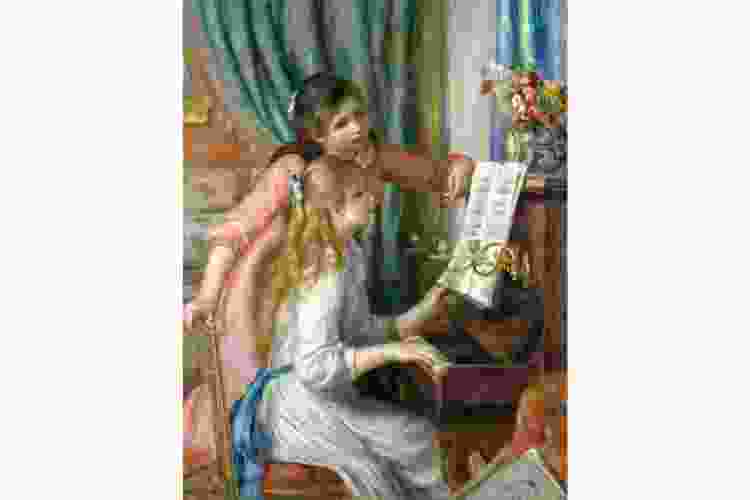
This is one of the later Renoir paintings. “Young Girls at the Piano,” or “Jeunes filles au piano” in French, was a commission for the Musée du Luxembourg. Along with the original, Renoir also painted repetitions. These variations of the same image include an oil composition and two sketches. These are on display in museums in Paris and the Metropolitan Museum of Art in New York City.
19. Maria Sert (1904)
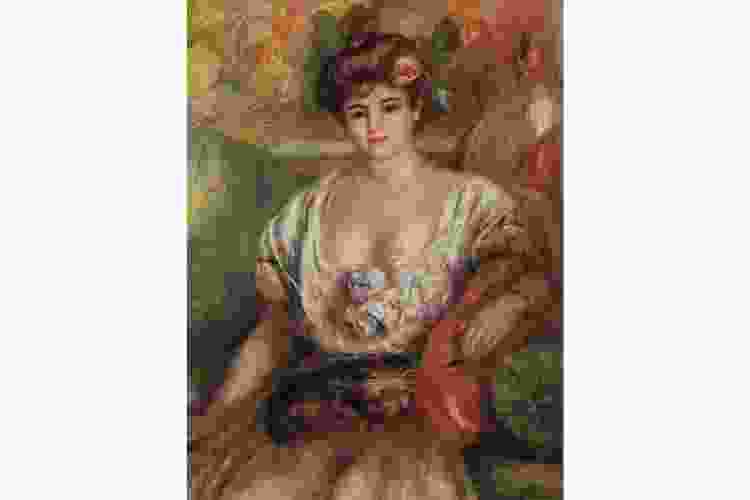
This is one of the Renoir paintings that depicts Maria Sert in a portrait, a muse of twentieth-century artists. Sert was a pianist and was often associated with other famous musicians, artists and writers in Paris. The portrait captures her glamorous and elegant demeanor as she sits on a chase and gazes towards the viewer.
20. Self Portrait with a White Hat (1910)

Completed late in life, “Self-Portrait with a White Hat” depicts Renoir in a three-quarter view. His light-colored hat pops against the dark backdrop and he uses brushstrokes to convey texture and light. Though he strayed from the Impressionist movement, his brushstrokes still show the way the style influenced his work.
21. The Bathers (1918-19)
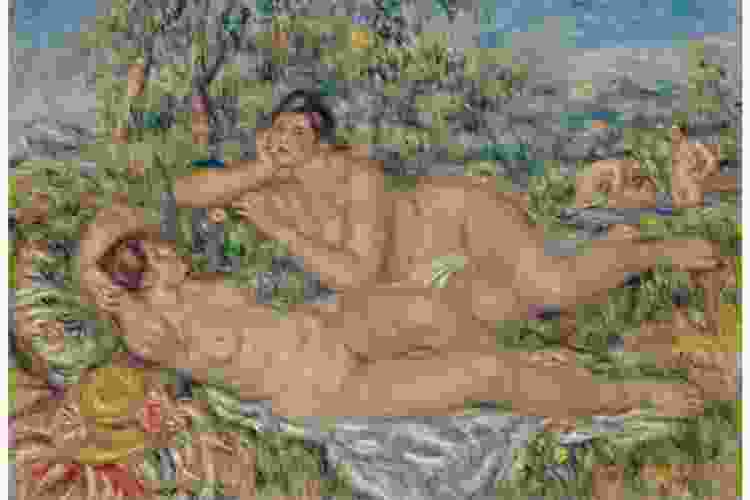
The last of Renoir’s paintings, “The Bathers” (“Les Baigneuses” in French) depicts two groups of naked women. Two models lounge in the foreground while a group of three bathe in the background. Actress Andrée Hessling, the first wife of Renoir’s son, is one of the models for the painting. Renoir’s final work of art, “The Bathers,” was completed in the year of his death.
Renoir paintings are some of the most iconic and recognized pieces in art history. Pierre-Auguste Renoir was a renowned Impressionist painter who often painted landscapes and depicted leisurely occasions. His use of color, brushstroke technique and intricate detail also makes Renoir paintings iconic in the world of art history. Renoir’s paintings provide an idyllic and beautiful look back into the past and his classical style will continue to be loved for generations to come.
For even more fun painting gift ideas, check out other experiences happening on Classpop!

